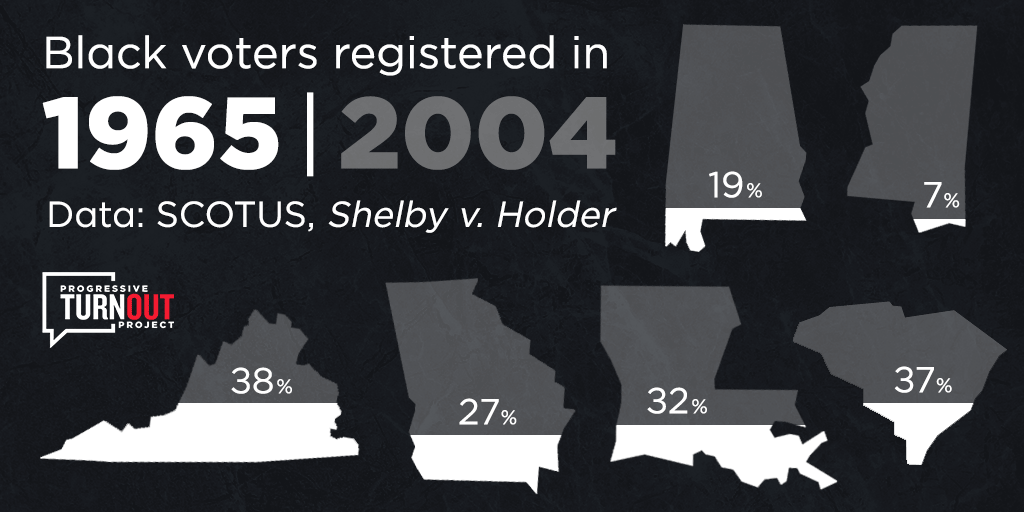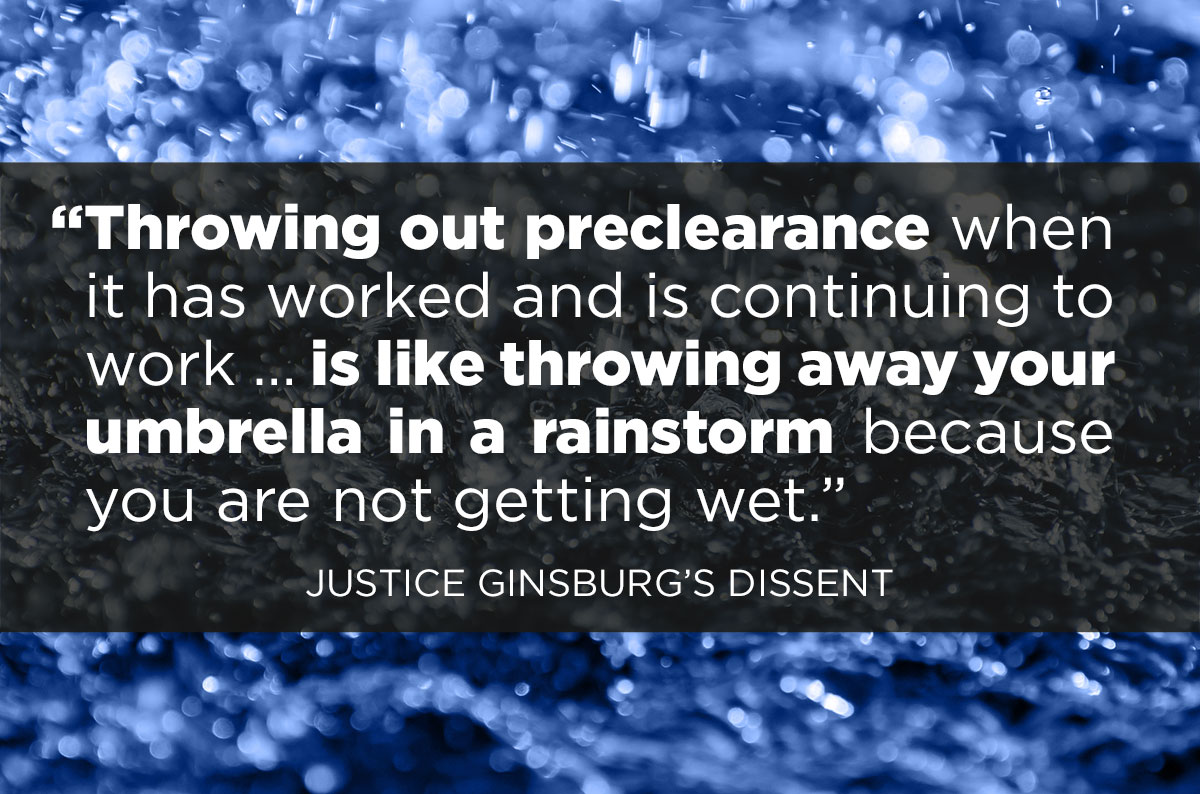
It’s always been a battle to ensure the right to vote. In 2013, the Supreme Court disarmed the American people.
The Roberts Court’s 5–4 ruling in Shelby County v. Holder disenfranchised millions of U.S. voters by invalidating a key part of the Voting Rights Act. And six years later, Congress’s continued inaction is giving states across the country a green light for voter suppression.
The Voting Rights Act worked
The 15th Amendment guaranteed the right to vote regardless of race or color, but it was an empty promise: Congress didn’t step up to enforce that protection for nearly a century. Finally, in 1965, civil rights demonstrations forced President Johnson to act.
An abbreviated timeline:
- 1965: Congress passes the Voting Rights Act (328–74 in the House and 79–18 in the Senate)
- 2006: Congress reauthorizes the Voting Rights Act (390–33, 98–0)
- 2013: The Supreme Court demolishes the Voting Rights Act (5–4)
Under the Voting Rights Act, jurisdictions with a history of voting rights violations — like Shelby County and the rest of Alabama — required federal approval for any new laws or rules affecting elections. This provision is known as preclearance. Justice Ruth Bader Ginsburg, in her Shelby County dissent, explained why that was so important:
“Early attempts to cope with this vile infection resembled battling the Hydra. Whenever one form of voting discrimination was identified and prohibited, others sprang up in its place.”
In other words, preclearance allowed the Justice Department to stay one step ahead of states’ efforts to suppress the vote.

And it worked: in Mississippi, black voter registration rates jumped from 7% in 1965 to 60% in 1967, and the gap in registrations between white and black voters continued to close.
Until we got a court, and a chief justice, hostile to voting rights.
Shelby County was wrongly decided
In Shelby County, the formula used to determine which jurisdictions were subject to preclearance was ruled unconstitutional. In one fell swoop, the most powerful part of the Voting Rights Act — the weapon that finally killed the Hydra — was gone.
The majority said the formula was outdated, even though Congress had reauthorized it only seven years earlier. Roberts’ opinion also made the absurd argument that, because voting discrimination had decreased under preclearance, preclearance was no longer needed.
Justice Ruth Bader Ginsburg put it best in her dissent: “Throwing out preclearance when it has worked and is continuing to work to stop discriminatory changes is like throwing away your umbrella in a rainstorm because you are not getting wet.”

It’s now clearer than ever that Ginsburg was right. Since 2013, without the Voting Rights Act to stop them, states have:
- passed discriminatory voter ID laws
- closed hundreds of polling places
- criminalized voter registration drives
- purged voters from the rolls
To their credit, some states have worked in the other direction, too — for example, Oregon became the first state to enact automatic voter registration in 2015.
But voting rights should not — must not — depend on where you live. This is Congress’s problem to solve, and the next step is clear.
Congress can fix it
Chief Justice Roberts even wrote the solution in his opinion itself: “We issue no holding on [preclearance] itself, only on the coverage formula. Congress may draft another formula based on current conditions.”
Congress has so far failed to take up that urgent task. But H.R. 4, the Voting Rights Advancement Act, would do exactly that. Take a moment today to call your representatives and urge them to pass this bill. Enter your ZIP code here for a sample script and your rep’s phone number.


